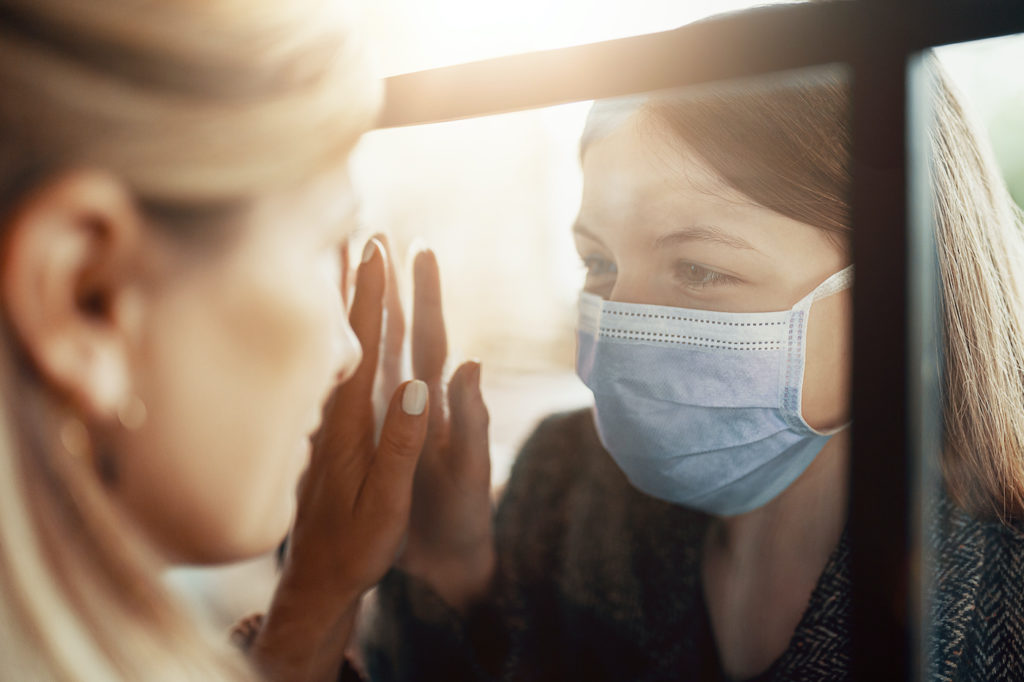The COVID-19 pandemic caught everyone by surprise, but we’re all not experiencing the same adverse ramifications. In particular, differences in infections and economic downturn induced by the national quarantine vary significantly across zipcodes. As Pastor Steven Furtick at Elevation Church eloquently said: “we are all in the same storm, but we are not in the same boat.”
My recent research, with Cary Wu, explores whether differences in social capital across counties can help explain the differences in the severity of the pandemic. We use data on over 2,700 counties, linking their number of infections and weekly growth in infections between March and April with their social capital, as defined by the Joint Economic Committee (JEC) measure of social capital. This index is created as a function of several indicators on family unity, family interaction, social support, community health, institutional health, collective efficacy, and philanthropic health. Although there are many definitions, social capital refers to the norms and relationships that facilitate coordination and resilience within a community.
Whether social capital reduces or increases the transmission of the virus is not totally clear on paper. On one hand, greater social capital could lead to more in-person interactions, which would lead to a higher probability of transmitting the virus. For example, the collective gathering for, and subsequent celebration of, the soccer game in Bergamo is one of the reasons many scholars conclude that Italy became the center of the virus following the outbreak in Wuhan, China. On the other hand, greater social capital could lead to better hygiene and collective responses to reduce contagion out of compassion for their neighbors. These two competing theories make for an interesting empirical question that we can take straight to the data.
The figure below summarizes the main results across counties (weighted by population) as of April 27, 2020: there is a strong negative relationship (correlation = -0.27) between social capital and the number of infections. A similar relationship holds when you look at the average weekly growth in the number of infections and social capital, meaning that it mediates both the severity and spread of the virus. All in all, these results suggest that the positive effects of social capital outweigh any negative effects of social interaction on the spread of the virus. In particular, the compassion for neighbors could lead people to socially distance, returning to greater levels of social interaction once the pandemic is over and a vaccine is out.
Start your day with Public Discourse
Sign up and get our daily essays sent straight to your inbox.Skeptics might be quick to critique these results because of the wide array of differences between counties with higher versus lower levels of social capital. For example, counties with more social capital also tend to have lower population density (correlation = -0.13). However, as we show in the paper, these results are robust when controlling for a wide array of county characteristics, ranging from gross domestic product (and its growth rate), to population density, to the poverty rate. In short, we threw a lot of potentially confounding effects against the specification and nothing could wash out the effect.
And yet, knowing that social capital matters for mediating the effects of the pandemic is only the first step. We need to understand what specific policies and features matter more than others. In particular, what are the specific inputs to the production of social capital that play more of a mediating role?
One of the important ways that social capital makes communities more resilient is through the role of families and how neighbors can lend a helping hand to those in need. For example, we have already seen countless stories of younger neighbors bringing groceries and shopping for the elderly. More generally, religious institutions are playing a crucial role in helping individuals stay connected and meet real needs, including even handing out groceries and holding drive-in services. Moreover, recent data from Gallup show that, despite the closure of religious services, there has been no decline in the proportion of people worshipping, although where and how they do that has clearly pivoted to a virtual setting. In fact, a recent Fox News poll conducted between March 21 and 24 found that 70% of Americans had reported praying for “health and healing.” In other words, religious institutions are providing resilience to both individuals and communities.
The fact that religious institutions step in to address direct community needs and individuals’ desire for spiritual nourishment is not new. For example, my earlier research with Byron Johnson found that, during the financial crisis of 2008–2009 and the subsequent recovery, active Christians maintained systematically higher levels of subjective well-being. In contrast to those who simply label themselves as Christians, only those who were actively engaged in their church community and believe faith is important, demonstrated resilience in their reported well-being over the business cycle. These results suggest that religious institutions will continue to play an important role during the pandemic for both individuals and their broader communities.
The fact that social capital is so predictive of the severity and spread of the COVID-19 virus highlights how public health interventions need to be connected with the social forces that are already at play in communities; failure will cause the interventions to be less effective. For example, discussions about contact tracing and a rapid response to a potential resurgence of the virus need to respect and account for different attitudes and risk profiles at a county level: some communities are systematically less at risk and have strong preferences against close monitoring, whereas other communities may be more population-dense and welcome ongoing tracking.
At the very least, our paper shows that the ties that bind are also the ties that allow for mitigating the virus and facilitating effective responses.














